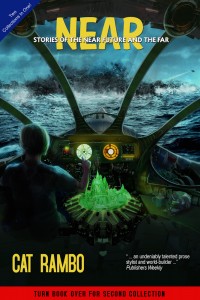-
Get Fiction in Your Mailbox Each Month
Want access to a lively community of writers and readers, free writing classes, co-working sessions, special speakers, weekly writing games, random pictures and MORE for as little as $2? Check out Cat’s Patreon campaign.
This site is a participant in the Amazon Services LLC Associates Program, an affiliate advertising program designed to provide a means for sites to earn advertising fees by advertising and linking to Amazon.com.
Tag Archives: writing exercises
Notes From Michael Stackpole’s “How To Write a Novel in 21 Days”
These are my notes from the presentation at MidSouthCon 30, 2012m which was great. I suggest taking it from Michael rather than using these notes, which are a poor substitute at best. You can find the CD on his website. That said, here are the notes. I should say that they’re less about how to write a novel in 21 days than how to plan a novel in 21 days through a series of exercises intended to increase knowledge of character, world, and plot. Continue reading
Posted in Writing
Tagged developing character voice, michael stackpole, plotting a novel, writing exercises, writing F&SF
1 Comment
Story Prompts: Ten Impulses Towards Flash
I talked yesterday about flash fiction, what it is and why writers might want to write some. I mentioned that it’s a great place to try out new techniques. So here’s five possible things to focus on in a flash piece, with five more coming on Monday. Pick one and sit down and write the story. How long should it be? That’s entirely your call. Continue reading
Posted in Writing
Tagged flash fiction, how to write flash, james thurber, michael swanwick, writing exercises
1 Comment
Story Prompt #3
Here’s your story prompt for the day. What if the creature depicted in this picture were sentient? Continue reading
Story Prompt #1
Here’s your challenge – write either a beginning or ending inspired by this image that invokes at least three senses – and doesn’t take place in a museum. Feel free to share in the comments! Continue reading
Posted in Writing
Tagged fossilized deer skeletons, writing, writing exercises, writing prompts
1 Comment
Active Verbs
Active verbs slice to the heart of a sentence’s meaning, inject action, make prose dance with precise control. Active verbs cajole, captivate, charm, and compel. They lend the muscularity of manual labor, a scapel’s taxonomic precision, and the graceful sway and bob and glide and jump of a dance. Continue reading
Foreshadowing and Establishing Conflict
Somehow that first moment of embarrassment, that moment of being in “the strange toilet” encapsulates so much of what that story is about and how alien the sexes can be to each other as well as how strange their container, the norms that make them up, which constitute the walls of “the can” itself, are. Look at how the center of his masculinity is framed visually: the gray zipper edge of his jeans around his pale exposed pecker. There is so much going on in that first paragraph, including sensory details like the twitch of his insides, the blare of a giggle, the pattern and threat of a zipper, that it’s worth copying out, pulling apart sentence by sentence to figure out how it’s working. Continue reading
3 Strategies for Snaring the Senses
Go for the gut, the emotional, the upsetting. Next time something disgusts you, take long enough to get the details down, the oily sheen of rot as it dissolves underneath your touch, the way the smell of durian stuffs itself into your nostrils, the exact configuration of what lies in that toilet. And do the same with the bad and shameful in your history, the things that paralyze you. Put them on the page and you will be making a story that grabs the reader and tells them something true. Continue reading
5 Things To Do In Your First 3 Paragraphs
Display your command of language. It’s worthwhile for a writer to think about poetry, and all its devices like assonance and alliteration, metaphor and allusion, internal rhythm, even meter. Save scraps of speech that you like, stud those paragraphs with wonderful things and spend with wild abandon from your store, because this is the make or break moment, when your reader decides whether or not to continue. You cannot lavish enough attention on your reader in the form of these paragraphs. Continue reading
Posted in Writing
Tagged beginnings, book lists, carol emshwiller, james tiptree jr, kelly link, kindle, paragraphs, reading, teaching, thomas m. disch, writing, writing exercises
25 Comments





